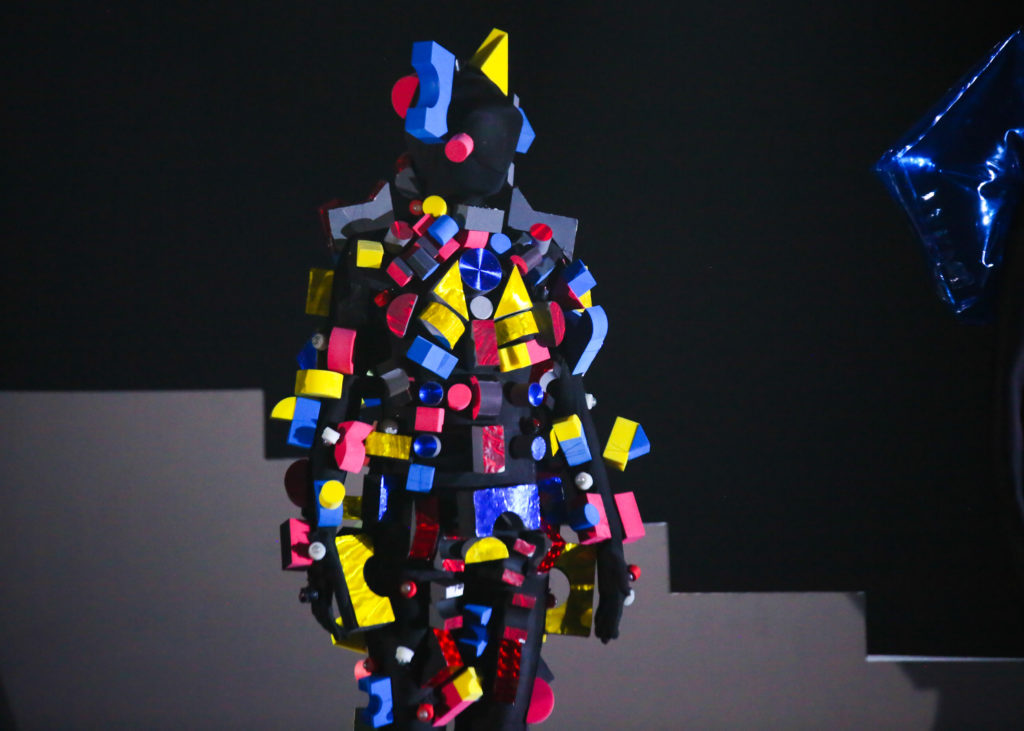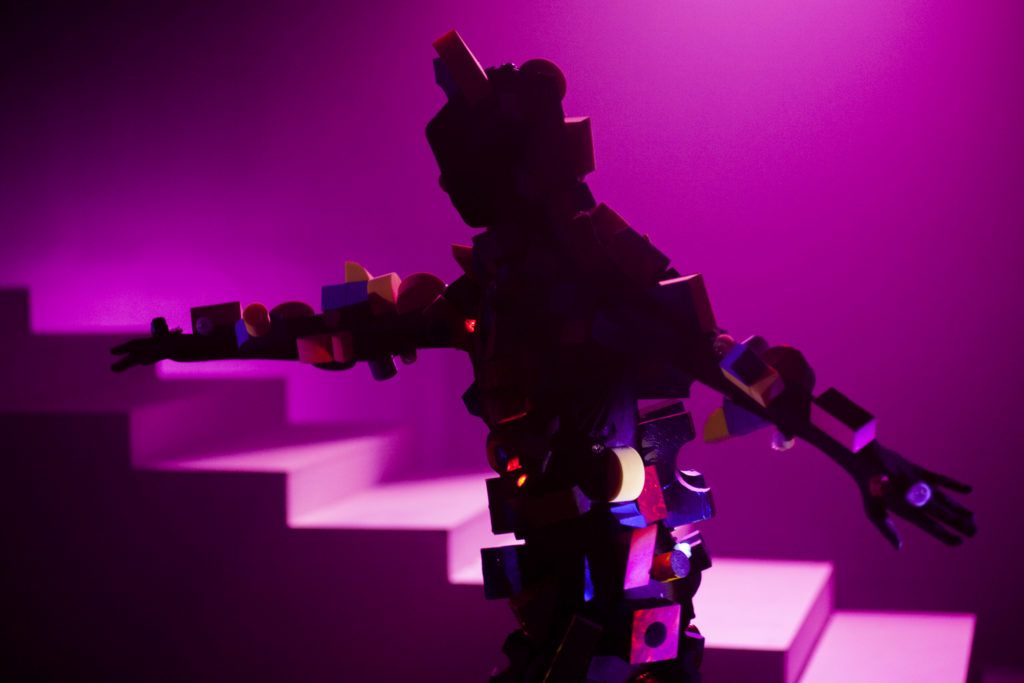Art & Exhibitions
At Mana Contemporary, ‘Virtually There’ Conjures the Magic of Masterpiece Bauhaus Ballet
Technology and humanity merge in this homage to Oskar Schlemmer’s 'Triadic Ballet.'

Technology and humanity merge in this homage to Oskar Schlemmer’s 'Triadic Ballet.'

Katy Diamond Hamer

Taking a cue from Oskar Schlemmer’s Triadic Ballet, art directors Mafalda Millies and Roya Sachs partnered with Performa Visionaries to bring Virtually There to Mana Contemporary. Their ballet, a contemporary homage to the 1922 version currently on view at the Whitney Museum as part of Dreamlands: Immersive Cinema and Art, came together with a team of collaborators. The curators recruited artists Kate Gilmore and Heather Rowe to do set design; choreographer Karole Armitage; composer Charles Derenne, who contributed an original live score; and the Campana Brothers, who designed the costumes.
With intentions that recall the original Bauhaus masterpiece, Millies and Sachs set out to use bodies and physical movement as well as restriction, to reopen a dialogue so relevant to today: the conversation between technology and humanity.
On opening night, in a darkened theater with nary an empty seat, five separate dancers took to a runway and then center stage, with each of their movements calculated and precise. And these movements, according to Millies and Sachs, along with the performance’s unfolding theme, join it with Schlemmer’s work in the early 20th century.
Friends since childhood yet participating in their first official collaboration, Sach’s said, “Mafalda and I are both German and the Bauhaus is something we’ve been intrinsically linked to. We found through conversation a mutual passion in Oskar Schlemmer’s Triadic Ballet. The more we researched and started reading about it the more we realized that there were these incredible, unique patterns happening nearly 100 years later.”
One of the most notable visual elements of the performance are its costumes. Each dancer is clothed in a black bodysuit allowing for their physical silhouette to virtually disappear while elements of color leap from each form, ranging from corrugated metallic board to inflatable plastic, wires, and LED lights. The Campana Brothers are furniture designers by trade, based in Brazil, and their costumes influence the choreography as well.
Sachs added, “For Schlemmer, it was always the costumes that came first and would influence the movement. This affected Karole [Armitage] because you can’t choreograph a dance until you are aware what the limitations are based on the costumes.” Each distinct character came to life through these costumes, which were custom made in New York.

While in direct reference to technology and our time, many years after that of Schlemmer and his reaction to the Industrial Revolution, Virtually There is not a critique. As Sachs herself offered, “People critique technology so often these days, saying that it is shifting our lives, we are becoming addicted, we are no longer ourselves. For us this project has never been about critiquing technology. It’s about showing a certain awareness. We found this [a] new balance and transcendence if you will, where we are both digital and human and one cannot exist without one another.”
During the performance, some of the movements felt at once timeless and relevant to today’s concerns. Occasionally the dancers would be quite still, using subtle gestures, whereas, in other moments, they danced in ways that could be equated with a hip-hop swagger.
Recommended: 10 Emerging Artists to Keep on Your Radar
Millies, for her part, highlighted the value of perceptive differences: “It’s interesting to see how different people perceive this movement. We never asked the Campana Brothers or Karole what they meant and we never even discussed what the movements might mean even between us.” She added, “We all have a different interpretation. It’s just great how versatile it is, something we had only hoped in our dreams that we could achieve.”
Coproduced by Job Piston of Performa, Virtually There is at Mana Contemporary, November 19th–22nd.